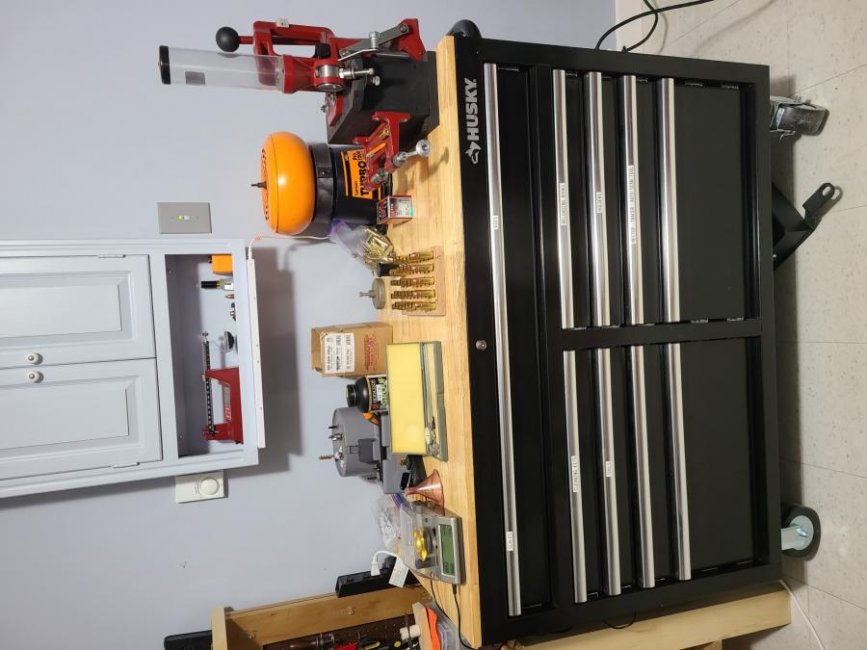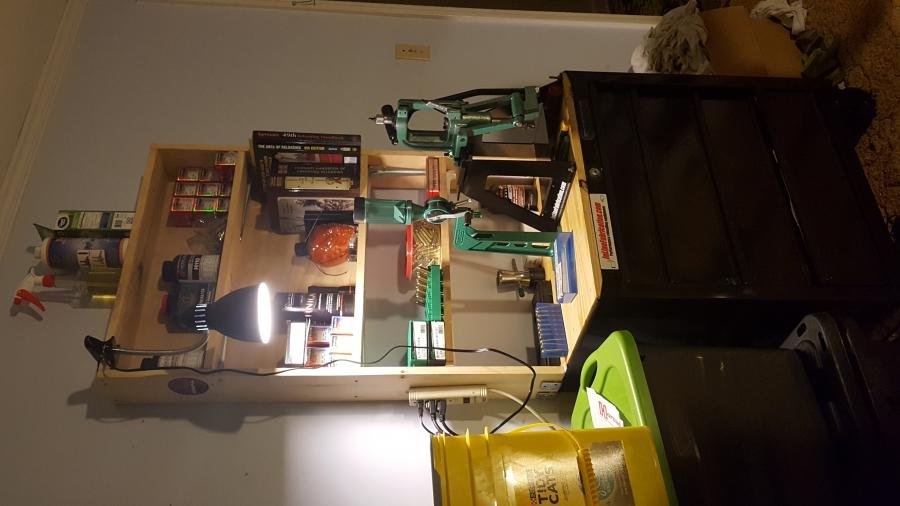pidevildog07
Active Member
Just bought a craftsmen 26x18x27 4 drawer with wheels and am going with 3/4" pine on top but am unsure if I should if I should stick with pine under the top inside the top drawer and just screwing the two together with deck screws or put in a 1/4" steel plate and bolt it through.
I'm already planning on taking the wheels off because it's not moving anytime soon and space is sorta at a premium. I'm going to take the bottom drawer out and stack lead ingots for stability. Don't have the option of lagging to the wall or the floor. I'm also going with an inline fab for my rock chucker. What say you?
I'm already planning on taking the wheels off because it's not moving anytime soon and space is sorta at a premium. I'm going to take the bottom drawer out and stack lead ingots for stability. Don't have the option of lagging to the wall or the floor. I'm also going with an inline fab for my rock chucker. What say you?



 Had to use it or would've had to sacrifice using two of the drawers while the press was in use.
Had to use it or would've had to sacrifice using two of the drawers while the press was in use. 